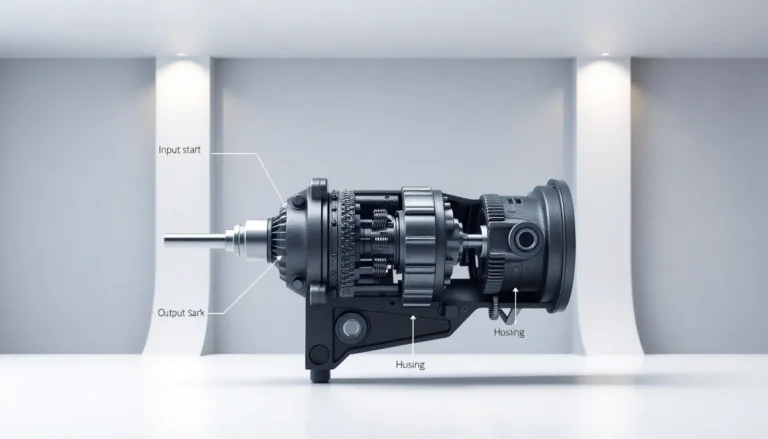Ever found yourself staring at your iPhone, wishing you could share that hilarious cat video or the latest episode of your favorite show on a bigger screen? You’re not alone. Connecting an iPhone to a TV can feel like trying to solve a Rubik’s Cube blindfolded. But fear not! With just a few simple steps, you’ll be the proud owner of a mini movie theater right in your living room.
Table of Contents
ToggleOverview of Connecting iPhone to TV
Connecting an iPhone to a TV allows for an enhanced viewing experience. Users can display photos, videos, and apps on a larger screen, transforming their living room into a mini theater.
Several methods are available for this connection. First, an HDMI adapter provides a direct physical link. This method guarantees a stable and high-quality signal. Using Apple’s Lightning Digital AV Adapter, the iPhone connects to the HDMI port of a TV.
Another option employs AirPlay, which facilitates wireless streaming. With AirPlay, content from the iPhone displays on compatible smart TVs. This wireless method reduces cable clutter and enhances convenience.
Smart TVs often include integrated options. Devices such as Roku, Apple TV, and Chromecast offer additional wireless streaming capabilities. Using these devices, users can mirror their iPhone screens effortlessly.
Not every TV supports direct connections or AirPlay. Confirming compatibility ensures a hassle-free experience. It’s advisable to check the user manual or manufacturer’s website.
The overall setup process is relatively quick. For HDMI connections, plug in the adapter and choose the correct HDMI source on the TV. For AirPlay, swipe down from the top-right corner of the iPhone screen to access the Control Center. Selecting the proper device initiates the mirroring process.
In terms of audio and video quality, HDMI connections typically outperform wireless methods. With HDMI, there’s minimal lag, ensuring seamless playback. Streaming via AirPlay, while convenient, may introduce slight delays or reduced quality in certain instances.
Understanding these connection options simplifies the decision-making process, ultimately enhancing the enjoyment of multimedia content.
Wired Connection Methods
Connecting an iPhone to a TV through wired methods offers a reliable and straightforward way to enjoy content on a larger screen. Two primary options include using an HDMI cable or a Lightning to HDMI adapter.
Using HDMI Cable
Using an HDMI cable provides a direct connection to most modern TVs. The HDMI port present on the TV allows an easy plug-and-play setup. Begin by inserting one end of the HDMI cable into the TV’s HDMI port. Next, connect the other end to the iPhone using a compatible adapter. Enjoy sharp video and audio quality with minimal latency. This method suits individuals who prioritize stable connections for activities like gaming or streaming movies.
Using Lightning to HDMI Adapter
Using a Lightning to HDMI adapter serves as a bridge between the iPhone and the TV. The adapter fits into the Lightning port on the iPhone while the HDMI end connects to the TV. This solution enables users to mirror their iPhone screens effectively. It’s essential to ensure compatibility with both the port and the TV model. Expect an enhanced experience with vibrant visuals and clear sound, making it ideal for viewing photos or videos during gatherings.
Wireless Connection Methods
Several wireless methods allow users to connect an iPhone to a TV, enhancing the viewing experience without cumbersome cables.
Using Apple AirPlay
AirPlay serves as an effective way to stream content from an iPhone to an Apple TV or compatible smart TV. Users simply swipe down from the top corner of their iPhone, selecting “Screen Mirroring” to find available devices. Once the desired TV appears, tapping it creates an instant connection. This method supports videos, photos, and apps, making it versatile for different types of content. AirPlay also maintains high-quality audio and video, ensuring an enjoyable viewing experience. Ensure both the iPhone and TV are connected to the same Wi-Fi network for seamless operation.
Using Google Chromecast
Google Chromecast provides another wireless option to connect an iPhone to a TV. Users must first download the Google Home app to their iPhone. They then set up the Chromecast device on the desired TV. Once configured, users can open apps like YouTube or Netflix and tap the “Cast” icon highlighted on the screen. Selecting the Chromecast device establishes the connection. This method offers flexibility to stream various media, enhancing entertainment options. Moreover, Chromecast supports multiple devices, allowing different users to cast content without needing direct connection access.
Troubleshooting Common Issues
Connecting an iPhone to a TV may present some challenges. Identifying and resolving these issues enhances the viewing experience.
Connection Problems
Connection problems often stem from incorrect settings or incompatible devices. Users must ensure the iPhone and TV are on the same Wi-Fi network for AirPlay. If using an HDMI adapter, checking the compatibility of the adapter with the iPhone model is essential. Faulty cables can also cause interruptions, so testing them for damage helps identify issues. Restarting both the iPhone and TV often resolves connectivity glitches. If streaming still doesn’t work, resetting network settings on the iPhone might clear lingering issues.
Display Issues
Display issues typically arise from resolution settings or content compatibility. Users may need to adjust their TV’s input settings to ensure proper communication with the iPhone. For AirPlay streaming, ensuring compatible content is vital, as some apps restrict display capabilities. Users should also check for device firmware updates, as newer software often improves stability and compatibility. If the picture appears distorted or missing, reconnecting the HDMI cable or refreshing the AirPlay connection often rectifies the problem.
Connecting an iPhone to a TV opens up a world of entertainment possibilities. Whether through a wired HDMI connection or wireless options like AirPlay and Chromecast, users can enjoy their favorite content on a larger screen. The process is straightforward and enhances the overall viewing experience, making it perfect for sharing memories or enjoying movies with family and friends.
By understanding the compatibility of devices and troubleshooting common issues, anyone can achieve seamless connectivity. With the right setup, transforming a living room into a mini theater is just a few steps away. Embracing these methods allows users to fully enjoy their multimedia content in a way that’s both engaging and enjoyable.





